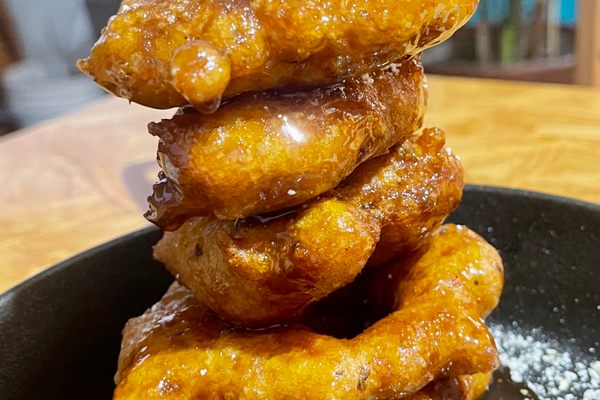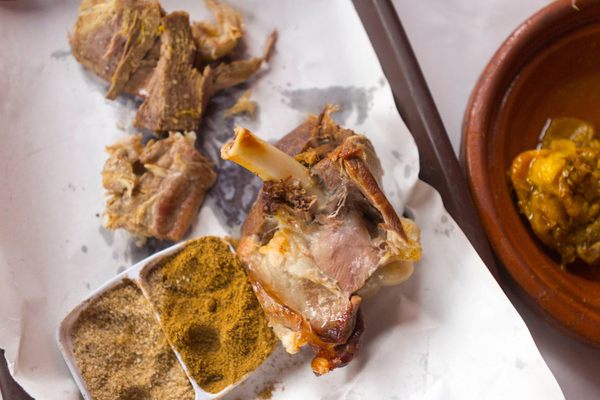Over the thousands of years that Andean cultures have been eating and cultivating potatoes, they have come to form the cornerstone of region’s culinary heritage. In fact, potatoes were such an important “fuel of empire,” that they were collected as taxes and transported by llama convoy to coastal villages where they were used as a form of currency. Along with this history, rituals have evolved to honor the life-sustaining tuber and the earth from which it comes. And one tradition that is still found throughout the region is pachamanca, a veritable feast of potatoes, meats, vegetables, and sweets that have been steamed in a stone-heated, herb-infused underground oven.
From the Quechua words for earth and pot, pachamanca is hardly your average barbecue, and making the buried feast requires strength, knowledge, patience, and some very special stones. To begin, the stone-and-sod oven is covered with a layer of volcanic rocks, known to withstand the heat of the fire without cracking. On top of the rocks, a layer of variously hued and flavored potatoes are added, often including the stark-white “freeze-dried” spuds known as chuños blancos. A second layer of rocks sets the long-cooking spuds sizzling and provides a new shelf for an assortment of marinated meats such as chicken, pork, lamb, and guinea pig. Covered in banana leaves and sandwiched using more volcanic rock, the meats begin to steam while sweeter foods that require less cooking time, such as plantain, pineapple, and corn tamales (made with sweetened condensed milk), occupy top-shelf status.
With a smattering of fava beans and local herbs, the earthen oven is ready to be covered with a tarp and shovels full of dirt, then left alone so the heat, smoke, and aromatics can do their work. Pachamanca is, above all, a celebration of the harvest and a tribute to the female deity for mother earth, pachamama. Makers bury the ingredients underground, feeding the earth as an offering before digging in themselves. But once the fire and earth have had their fill, usually after one to three hours, a cornucopia of charred, moist, and smoky delights is ready to be unveiled. Enjoyed with a mug of the fermented corn brew known as chicha or a local beer, the pachamanca represents history, community, and plenty for all.
Written By
 Leigh ChavezBush
Leigh ChavezBush
Sources
- link.springer.com/article/10.1007/s12230-016-9529-1
- link.springer.com/content/pdf/10.1007%2FBF02859217.pdf
- www.youtube.com/watch?v=04kuFjfY_dE
- www.seriouseats.com/2014/10/peruvian-pachamanca-earth-oven-party-food.html
- link.springer.com/article/10.1007%2FBF02859217
- books.google.com/books?id=l5tYiUHo9MoC&dq=Quechua+pachamanca+&lr=lang_en&source=gbs_navlinks_s
- www.jstor.org/stable/pdf/30028309.pdf
- www.npr.org/sections/thesalt/2015/06/30/418845104/perus-pitmasters-bury-their-meat-in-the-earth-inca-style
















